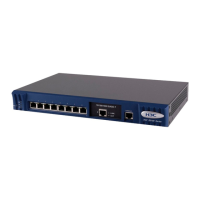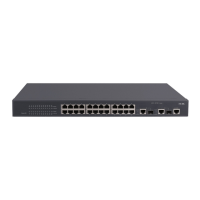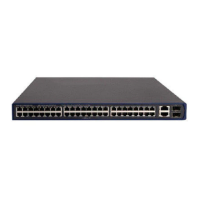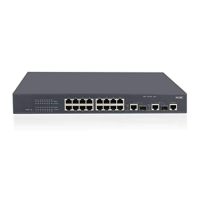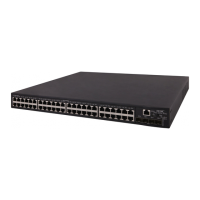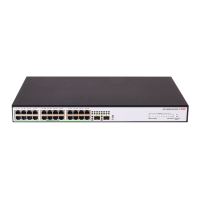1-3
State: ONLINE Online-Time(s): 8
Total 1 connection(s) matched
Table 1-2 Description on the fields of display web-authentication connection
Field Description
Username Name of an online Web-authentication user
MAC MAC address of the user
Interface Access port of the user
VLAN VLAN the user belongs to
Method
Access method of the user, shared, designated, or
extended.
State User status
Online-Time(s) Online time of the user
web-authentication auth-fail vlan
Syntax
web-authentication auth-fail vlan authfail-vlan-id
undo web-authentication auth-fail vlan
View
Port view
Parameters
authfail-vlan-id: ID of the VLAN to be specified as the Auth-Fail VLAN of the port, in the range 1 to 4094.
The VLAN must have existed.
Description
Use the web-authentication auth-fail vlan command on the port to configure a Web authentication
Auth-Fail VLAN, that is, the VLAN allowed to be accessed by users failing Web authentication on the
port.
Use the undo web-authentication auth-fail vlan command to restore the default.
By default, no Auth-Fail VLAN is configured on a port.
Note that:
z Before configuring an Auth-Fail VLAN for Web authentication on a port, you need to use the
web-authentication select method extended command to set the Web authentication access
method on the port to extended.
z Failing authentication means being denied by the authentication server due to explicit reasons
such as wrong password. Authentication failures caused by authentication timeout or network
connection problems do not fall into this category.
z For MAFV to take effect on a port, you must also enable the MAC VLAN function on the port.
z You cannot delete a VLAN configured as Auth-Fail VLAN. To delete such a VLAN, remove the
Auth-Fail VLAN configuration first by using the undo web-authentication auth-fail vlan
command.
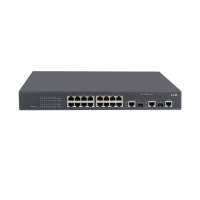
